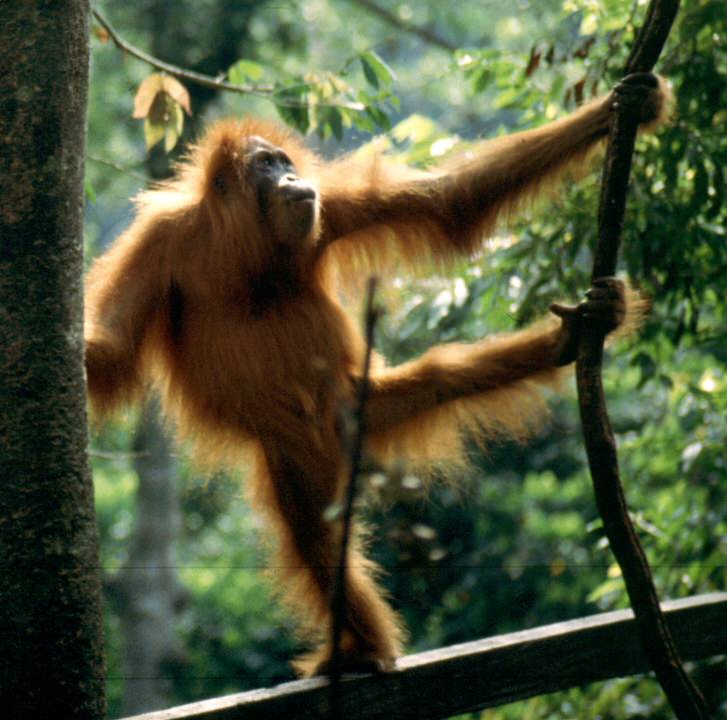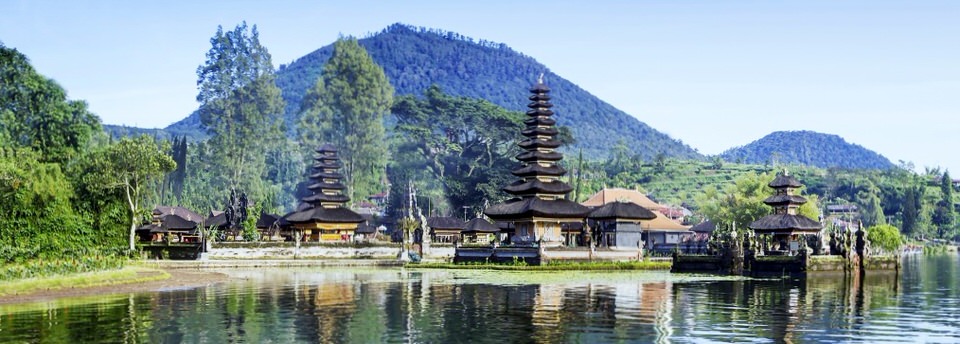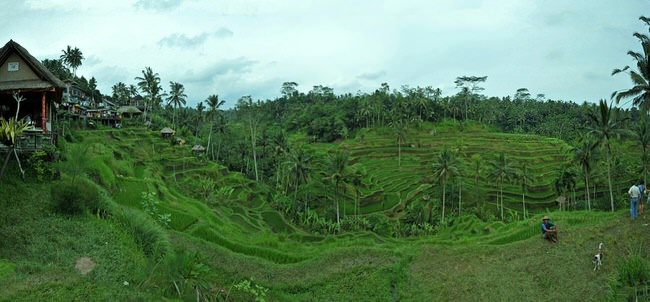
Indonesia Luxury Tour Vacations
Indonesia is a vast and beautifully diverse country of beautiful islands stretching for more than 5,000 kms across I the equator. It would simply be impossible to see everything that this, the world’s largest archipelago, has to offer in a short length of time. This Travel Planner therefore, offers essential information by dealing only with major tourist attractions which are easily accessible by air, sea and land. In the past most popular destination for visitors to Indonesia has undoubtedly been Bali.
In recent years however, other areas are also becoming popular and 24 top priority areas have been selected by the Directorate General of Tourism to provide visitors with the quintessential soul of Indonesia. These are: Jakarta, West Java, Central Java, Yogyakarta, East Java, Bali, West Nusa Tenggara, East Nusa Tenggara, Aceh, North Sumatra, West Sumatra, South Sumatra, Riau Bengkulu, Lampung, South Sulawesi, North Sulawesi, Southeast Sulawesi, East Kalimantan, West Kalimantan, South Kalimantan, Central Kalimantan, Maluku, and Irian Jaya.
Variety is the spice life and nowhere is this more true than in Indonesia. No two places are alike in unspoiled beauty, art, culture and people. The towering mountains and primitive cultures of Irian Jaya contrast sharply with the terraced hills, and highly sophisticated societies of Bali and Java and the animistic beliefs which still have a major influence on the way of life in South Sulawesi. “Unity in Diversity”, which is the country’s motto, accurately describe these diverse cultures and extraordinary people brought together to create one nation with one national language, Bahasa Indonesia.
For the traveller, Indonesia offers a fine blend of scenic beauty, fauna and flora, culture, marine parks and a wide collection of modern accommodation. Luxury travel in Bali international gateways providing easy access for travellers in Indonesia are: Jakarta, Denpasar (Bali) and Medan (North Sumatra) Other ports of entry and exit have been targeted as international gateways but are currently in the development stages. These include; Manado ( North Sulawesi), Ambon (Maluku), Batu Besar (Batam), Pekan Baru (Riau), Balikpapan (East Kalimantan), Surabaya (East Java), Kupang (East Nusa Tenggara), Pontianak (West Kalimantan) and Biak (Irian Jaya). An extensive network of air services connects the gateways with destination areas.
The name Indonesia has its roots in two Greek words: “Indos” meaning Indian and “Nesos” which means islands. It is an appropriate description of the archipelago as there are estimated to be a total of 17,508 islands, of which only about 6,000 are inhabited, stretching for 5,150 km between the Australian and Asian continental mainlands and dividing the Pacific and Indian Oceans at the Equator.
Five main islands and 30 smaller archipelagoes are home to the majority of the population. The main islands are Sumatra (473,6O6 sq.km), Kalimantan 1539,400 sq.km), Sulawesi l 189,216 sq. km), Irian Jaya (421,981 sq. km), and last but not leastJava (132,187 sq.km), home to 70 percent of the country’s population. Indonesia shares Irian Jaya with Papua New Guinea and two thirds of the island of Kalimantan with Malaysia and Borneo.
The islands and people of Indonesia constitute the fourth most populated nation in the world. As a democratic republic, Indonesia is divided into 27 provinces and special territories and classified geographically into four groups. First are the Greater Sundas, made up of the larger islands of Sumatra, Java, Kalimantan and Sulawesi. Second are the Lesser Sundas, consisting of smaller islands from Bali eastward to Timor. Third is Maluku which includes all the islands between Irian Jaya and Sulawesi. The fourth and final group is lrian Jaya in the extreme eastern part of the country.
Bali has a great variety of attractions, it’s physical beauty, the year-round pleasant climate, it’s unique art, and it’s friendly people make Bali a place regarded by many visitors as the “ultimate island”. The lack of any security problems, even during the recent dangerous times in other parts of Indonesia guarantees visitors a totally relaxing stay.
The nation’s capital, Jakarta, has a fascinating and significant history. It started as a small harbour town called Sunda Kelapa, but its founding dates back to the year 157 when it was named Jayakarta by Fatahillah of the neighbouring Sultanate of Banten. The name Jayakarta means City of Great Victory but this was later changed to Batavia under the Dutch. Now as Jakarta, the centre of government, business and industry, it spreads over an area of more than 650 sq.km 1410 sq miles) and has a population of over eight million people. It is also designated as a special territory, (Daerah Khusus Ibukota – DKI), which means that is is administered by a governor and enjoys the same status of a province.
Jakarta is the main gateway to Indonesia. It is a contrast of modern western architecture and traditional Indonesian culture. Its rapid growth into a metropolitan city reflects the economic, political, social and industrial development of the nation. In recent years, Jakarta has expanded its facilities for visitors with multi-star luxury hotels, fine restaurants, exciting nightlife and modern shopping centres as well as tourist attractions such as Taman Mini Indonesia Indah {Beautiful Indonesia in Miniature Park), restored colonial period buildings, marine resorts in the Bay of Jakarta, and an extensive beach recreation complex.
Climate: Indonesia’s climate is definitely tropical. There is no Autumn or Winter and distinctive “dry” and “wet” seasons share the year. The East Monsoon, from June to September, brings dry weather while the West Monsoon, from December to March is moistureladen, bringing rain. The transitional period between these two seasons is interspersed by the occasional heavy rain shower, but even in the midst of the West Monsson season, temperatures range from 21 degrees (70_F) to 33 degrees celcious 190_F except at higher altitudes which can be much cooler. Heaviest rainfalls are usually recorded in December and January and humidity is generally between 75% and 100%. Languages and Dialects:
There are about 583 languages and dialects spoken in the archipelago. There normally belong to the different ethnic groups of the population. Some of the distinctly different local languages are: Acehnese, Batak, Sundanese, Javanese, Sasak, Tetum of Timor, Dayak, Minahasa, Toraja, Buginese, Halmahera, Ambonese, Ceramese, and several Irianese languages. To make the picture even more colorful, these languages are also spoken in different dialects. Bahasa Indonesia is the national language which is akin to Malay, written in Roman script and based on European orthography. In all tourist destination areas English is the number one foreign language fairly spoken and writer, whereas some Dutch is till spoken and understood in the bigger cities and French increasing in its popularity at the better hotels and restaurants.
You will enjoy planning your Indonesia vacation with our Virtuoso Travel Advisors. We get you access to unparalleled experiences that transcend the ordinary. It helps us help you, if you begin with our vacation planner. Our expert Indonesia Travel advisors will make planning fun, save you time and costly mistakes. We do it all for you, air, car, hotels, and everything else you desire



